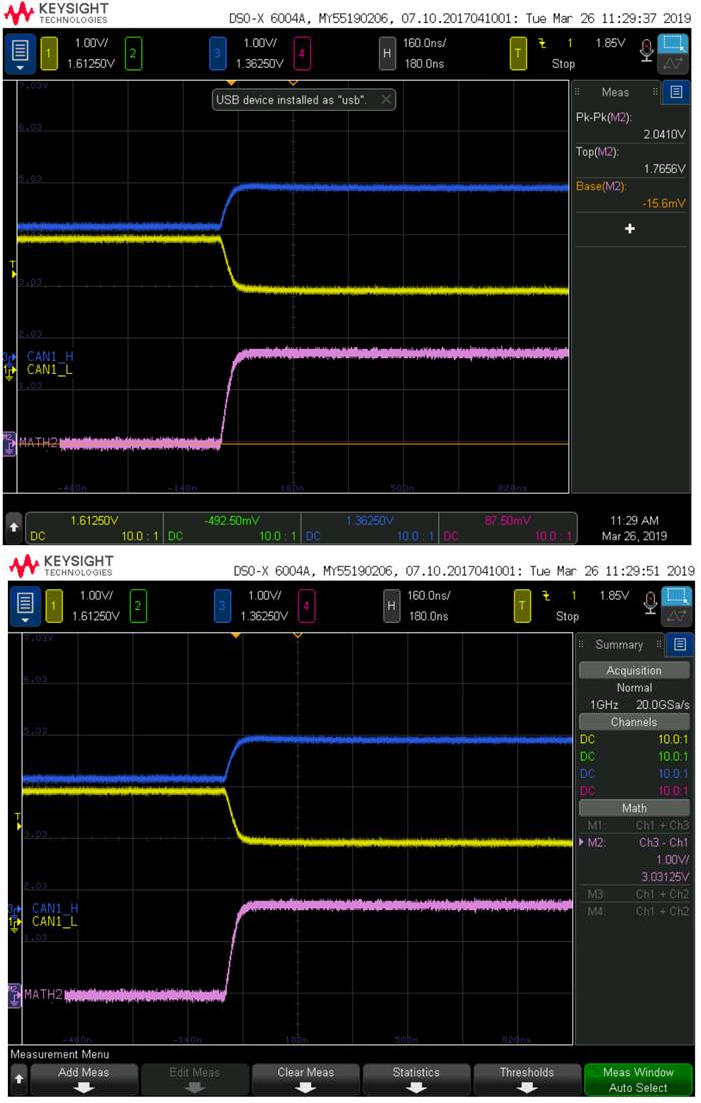Other Parts Discussed in Thread: TCAN1051
Hi Sir,
Could you please help to clarify how to measure the Vcm of TCAN1051 Bus driver symmetry?
We had measure as below waveform, please help us to check waveform is correct for Bus driver symmetry or not?
Thanks




